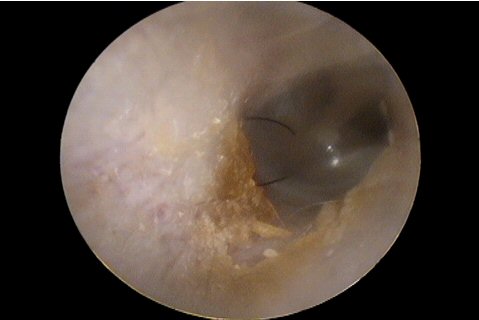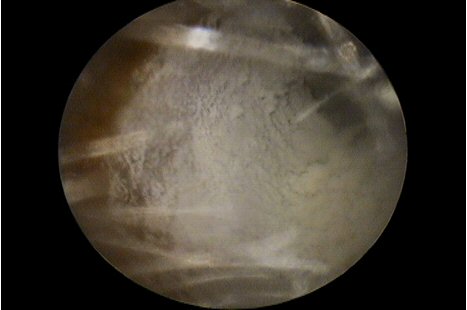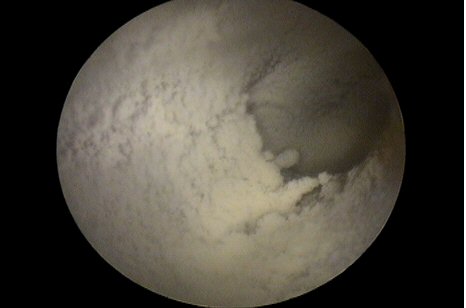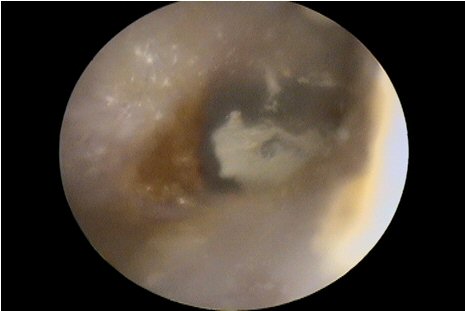Ear candling has been acclaimed as a treatment for almost every ailment of the ears, head, and - the entire body, depending on the source. In this article, we'll explore the history, the claims and the facts related to ear candling.
History: Although ear candling appears to date back to ancient cultures, the exact history is rather obscure. Dryer1 stated that people from Tibet, China, Egypt, the Pre-Columbian Americas, and possibly even the mythical city of Atlantis, participated in ear candling.
Although ear candling appears to date back to ancient cultures, the exact history is rather obscure. Dryer1 stated that people from Tibet, China, Egypt, the Pre-Columbian Americas, and possibly even the mythical city of Atlantis, participated in ear candling.
Ashby2 stated ear candles date back to 2500 BC in ancient Egypt, where candles were made from flax (a plant by-product). Ashby also noted, production of ear candles may have coincided with the domestication of the honeybee and the availability of wax. 2
Another source3 explains that ear candling was actually known as "ear coning" because cone-shaped pottery was used to facilitate the flow of smoke into the ear. A double helix was carved into the center of the cone. When the small end of the cone was placed into the person's ear, smoke from burning herbs could be "funneled" down into the ear canal. Supposedly, "the smoke and heat cleansed the ear canal and pulled debris out by vacuum as air was burned out of the ear canal."
Mayan, Aztec, and American Indians used ear candles, too. Some Indian tribes blew herbal smoke into the ear through a cone-shaped object. Ear candling was considered "a spiritual process for clearing the mind and senses." 3 Additionally, the process was used for "physiological cleansing" and "spiritual purification" before initiation rites and rituals. 4
Ancient Greeks used ear candling for "cleansing, purifying, and healing on a spiritual basis" and later for "physical benefits." American Hopi Indians of northern Arizona demonstrated candling in paintings of initiation rites and healing ceremonies. 5
The Materials:
In "The Practical Guide to Ear Candling," Sheppard6 offered a list of materials necessary for ear candling. Ear candles are made of unbleached cotton or linen, soaked in wax (i.e., paraffin or beeswax) and shaped into a hollow cone or cylinder. Often, one end of the candle is tapered for easier insertion into the ear canal. During the production of ear candles, herbs may be added to the wax, such as sage, chamomile, rose, rosemary, burdock root, osha root, periwinkle, jojoba, quassia bark, yucca root, or honey. 1 According to Sheppard, herbs added to the wax enhance aromatherapy during candling. 6
Ear candles are approximately 12 inches in length, about 5/8 inch in diameter at the top to ¼ inch at the tapered bottom.3 Ear candles take from 8 to 30 minutes to burn. Two to four candles are recommended per ear per session. 6
The Procedure:
There are two basic methods for completing ear candling; the "traditional" way and the "new" way. 6
The traditional way has the person lying on his or her side with the ear facing up. The head and shoulders are covered with flame retardant material or towels. An aluminum pie plate with a hole cut near the center is suggested to protect the participant. A hole is made in the center of the plate and the candle is inserted through the plate before being inserted into the ear canal. The person conducting the candling session inserts the candle into the ear canal without force. When a seal is obtained, the top of the candle is ignited. If smoke leaks out around the ear canal, a better seal is obtained by rotating the candle slowly. The person should hear cracking and popping sounds as the candle burns.6
Sheppard suggests beginning facial massage during candling to help the person relax and to help the sinuses clear. The person conducting the candling session should trim the candle every two inches as it burns, and that ashes should be picked up as quickly as possible. When the flame burns down to four inches, the candle should be extinguished. The process should be repeated with another candle. 6
The new way recommends that the person sit up during the candling session. Towels are still placed around the head and shoulder. The person conducting the candling session inserts the candle in the ear canal at a 5-10 degree angle away from the person's head. The candle is trimmed every two inches and extinguished when it is within four inches of the ear. 6
Alleged Benefits:
Dryer1 reports multiple claims have been made regarding potential benefits of ear candling, including:
- relieves sinus pressure and pain
- cleanses the ear canal
- improves hearing
- assists lymphatic circulation
- regulates pressure
- purifies the mind
- strengthens the brain
- relieves pain and fever associated with a ruptured eardrum
- cures swimmer's ear and other ear infections
- relieves earaches
- acts as an alternative to "tubes put in your ears"
- sharpens the senses of smell, taste, and color perception
- stabilizes emotions
- stops tinnitus (ringing in the ears)
- helps TMJ pain and stiffness
- relieves vertigo
- fortifies the central nervous system
- clears the eyes
- purifies the blood,
- acts as an anti-inflammatory, antiseptic, or antibiotic
- cures Meniere's syndrome
- aids sinusitis
- releases blocked energy
- reduces stress and tension
- cures auricular zona (a herpes zoster infection of the ear)
- opens and align the chakras
- opens the spiritual centers and cleanses the auric bodies.
Another website7 stated, "Ear candling can benefit almost everyone, from infants to adults. Musicians can benefit - especially singers and horn blowers - who often have a lot more wax build up than other people. People who wear hearing aids can benefit. Also, those people who have had previous ear injuries, can benefit from ear candling as they tend to have a greater build up of wax and fungus. Ear Candling should not be done to people who have ear tubes, perforated ear drums, or artificial ear drums."
Question:
Do these claims sound too good to be true?
Answer:
Yes.
Dr. Beck, audiologist and Editor-In-Chief of www.healthyhearing.com and www.audiologyonline.com stated,8 "The claimed benefits of ear candling are based on dangerous, illogical and incorrect assumptions. Ear candling is in fact a dangerous, ill-conceived and potentially disfiguring protocol, with no foundation in science." Dr. Beck further stated, "Candling demonstrates ignorance regarding the basic laws of physics and blatant disregard for anatomy and physiology."
Ernst9 noted ear candles are dangerous. "There are no data to suggest that it is effective for any condition." The use of ear candles was discouraged.
In one study designed to evaluate the effectiveness and safety of ear candling, pressure measurements of the ear canal demonstrated absolutely no negative pressure from burning candles -- despite claims that earwax is removed secondary to negative pressure. In this study, not only was no wax was removed, but in several cases, additional wax was deposited in the subjects' ear canals. 10
Two procedures were described in the Skeptical Inquirer11 which also demonstrated that ear candles do not remove wax from ears.
The first test involved a small test tube in which human earwax was placed. The human earwax was measured prior to testing. The test tube was heated to body temperature. An ear candle was placed in the test tube and ignited. After the candle was burned, the candle was cut open to reveal a brownish yellow deposit near the tip. However, when the wax was observed in the test tube, and measured again, neither the appearance nor the weight had changed. The ear candle did not remove earwax through a negative vacuum.Dryer1 stated that "negative pressure" to remove wax from ears would have to be so great -- it would rupture the eardrum in the process -- a dangerous and painful event!
A second test was done. An ear candle was placed in an empty test tube and ignited. After the candle was finished burning, it too, was cut open to reveal the same brownish-yellow deposit as was in the first test, indicating the deposit was from the ear candle itself.
Reports of Damage from Candling:
Many ears have been damaged from the use of ear candling. Damage has typically been in the form of burns from hot wax. A 1996 survey of 144 otolaryngologists1 indicated that 14 had seen patients for problems associated with ear candles. Included were 13 cases of external ear burns, 7 cases of ear canal blockage from candle wax, and 1 eardrum perforation.
A specific case reported by Dryer was found in the The London Free Press, a Canadian newspaper. 1 A woman experienced stuffiness of the nose and ear pains while scuba diving was referred to a "qualified" candler, via a health food store. During the "treatment" she felt intense burning in her ear. At the emergency room, attempts to remove candle wax from her eardrum failed. Surgery was required. She recovered fully and luckily, her hearing was not affected. The practitioner apologized, compensated the woman, and stopped performing candling.
In 2000, a woman in Toronto paid a "candler" $25 for a session of ear candling. During the session, hot wax from the candle ran down her ear canal and adhered to her eardrum. The woman reported it ultimately took four months to remove the wax entirely from her ear canal. She now lives with permanent ringing in the ears. 12
An otolaryngologist (ear, nose and throat physician) in Toronto had a patient come to his office in considerable pain. Candle wax had burned through the skin of the ear canal and the eardrum. The physician spent the day reconstructing the man's ear, secondary to "candling." 12
Regulatory Bodies:
Ear candles are not approved by the FDA, and cannot be marketed with health claims If a company makes health-related claims about their products (i.e., ear candles) they may potentially be considered medical devices by the Food and Drug Administration (FDA).
In 1993, the FDA seized $6000 worth of ear candles from a company in Ohio with labeling suggesting adequate and effective use for reducing ear wax, fever, and infections associated with a ruptured ear drum -- and that their product (ear candles) may be used as a replacement for surgical tubes inserted in the ear." 1
In 1998, the FDA ordered a California company to remove certain ear candle products from its catalog because the advertising called them a remedy for earaches, sinus headaches and allergies. The following statement was made by the FDA:
"The product labeling is false and misleading in that there is no validated scientific evidence to support the efficacy of the product for its intended use. Also, the label of the product contains inadequate directions for use since adequate directions cannot be written for the product's purported use. CDRH [The Center for Devices and Radiological Health ] considers the product to be dangerous when used according to its labeling, since the use of a lit candle in the proximity of a person's face would carry a high risk of causing potentially severe skin/hair burns and middle ear damage."1Conclusion:
Ear candles do not remove earwax, have no known scientific or medical benefit, and indeed pose a significant risk. They are quite dangerous and serve no apparent beneficial purpose.
Follow-up Note:
After the initial publication of this article on Audiology Online the authors were contacted by Au.D. students Jeremy Weintraub and Brandy Pouliot of Nova Southeastern University. The two had previously conducted a single-case trial on ear candling with video otoscopy images taken before and after two ear candling sessions on Mr. Weintraub. Precautions were taken to protect Mr. Weintraub from ash and melting wax by using a paper plate and dampened paper around his ear. Two sessions were used as the instructions that came with the ear candles recommended the use of 2-4 ear candles for the best results. Figures 1-4 show the sequence of results before and after the two ear candling sessions. The authors (HS & JD) would not recommend that other persons perform this same procedure, but wanted to share these images as they underscore the fact that ear candling is an ineffective and potentially dangerous procedure. The figures below demonstrate that ear candling actually adds additional foreign deposits to the ear canal instead of removing them. Thank you to Mr. Weintraub & Ms. Pouliot for allowing us to share these images.

Figure 1. Ear canal and tympanic membrane before ear candling.

Figure 2. Ear canal and tympanic membrane after ear candling. Note the white powdery substance.

Figure 3. Ear canal and tympanic membrane after second ear candling. Note additional white powdery substance.

Figure 4. Ear canal and tympanic membrane after irrigation of powdery residue. Note earwax is still present and some of the residue is still on the tympanic membrane.
References:
- Dryer, L. (2005). Why ear candling is not a good idea. Available at: www.quackwatch.org/01QuackeryRelatedTopics/candling.html
- Ashby, C. A brief history of ear candling. Available at: colonhealth.net/ear_candling/candhist.htm
- Ancient Process of Ear Candling, an amazing ear cleaning home remedy. The History of Ear Candling. Available at: www.dakara.com/earintro.html
- Amasha Oils Ear Candles, The History of the Ear Candle, Ancient Cone Process. Available at: www.amashaoils.com/earcandles.htm
- Hancher, L. A look at Hopi ear candles. Available at: www.lynnehancher.co.uk/aaahop.htm
- Sheppard, R. (2002). Practical Guide to Ear Candling. Auburn, CA: Wally's Natural Products.
- Vitamin Discount Warehouse. Ear candles. Available at: www.vitamindiscountwarehouse.com
- Beck, D. (2005). Personal Communication.
- Ernst, E. (2004). Ear candles: a triumph of ignorance over science. Journal of Laryngology and Otology, 118(1), pp. 1-2.
- Seely D.R., Quigley S.M., & Langman A.W.(1996). Ear candles - efficacy and safety. Laryngoscope, 106 (10), pp. 12226-1229.
- DeMeo, S. (1998). The pseudoscience of wax removal. The Skeptical Inquirer. Available at: static.highbeam.com/s/skepticalinquirer/
november011998/thepseudoscienceofearwaxremoval/ - Colabrese, I. & Wells, J.(2000). Ear Candling. CBC.CA Marketplace website. Available at: www.cbc.ca/consumers/market/files/health/earcandle/

